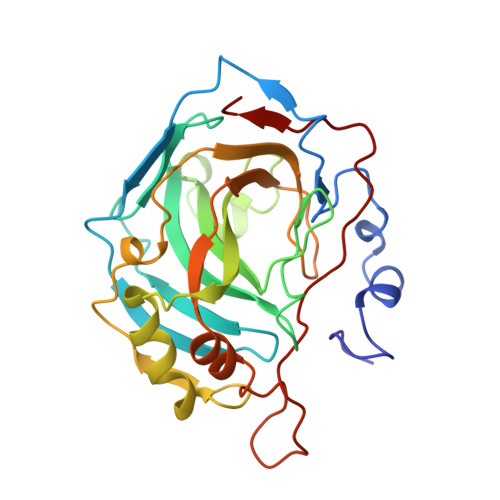Structure of cobalt carbonic anhydrase complexed with bicarbonate.
Hakansson, K., Wehnert, A.(1992) J Mol Biology 228: 1212-1218
- PubMed: 1474587
- DOI: https://doi.org/10.1016/0022-2836(92)90327-g
- Primary Citation of Related Structures:
1CAH - PubMed Abstract:
The three-dimensional structure of a complex between catalytically active cobalt(II) substituted human carbonic anhydrase II and its substrate bicarbonate was determined by X-ray crystallography (1.9 A). One water molecule and two bicarbonate oxygen atoms are found at distances between 2.3 and 2.5 A from the cobalt ion in addition to the three histidyl ligands contributed by the peptide chain. The tetrahedral geometry around the metal ion in the native enzyme with a single water molecule 2.0 A from the metal is therefore lost. The geometry is difficult to classify but might best be described as distorted octahedral. The structure is suggested to represent a water-bicarbonate exchange state relevant also for native carbonic anhydrase, where the two unprotonized oxygen atoms of the substrate are bound in a carboxylate binding site and the hydroxyl group is free to move closer to the metal thereby replacing the metal-bound water molecule. A reaction mechanism based on crystallographically determined enzyme-ligand complexes is represented.
- Molecular Biophysics, Chemical Center, University of Lund, Sweden.
Organizational Affiliation:


















